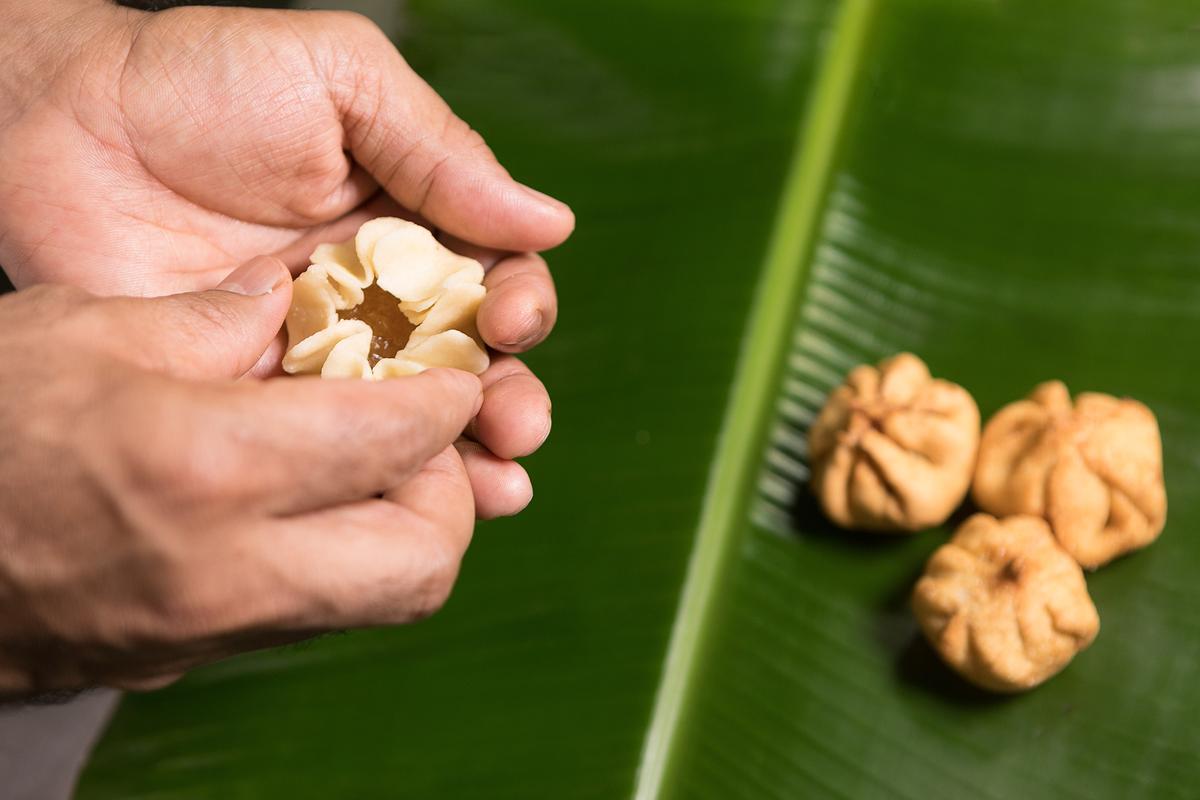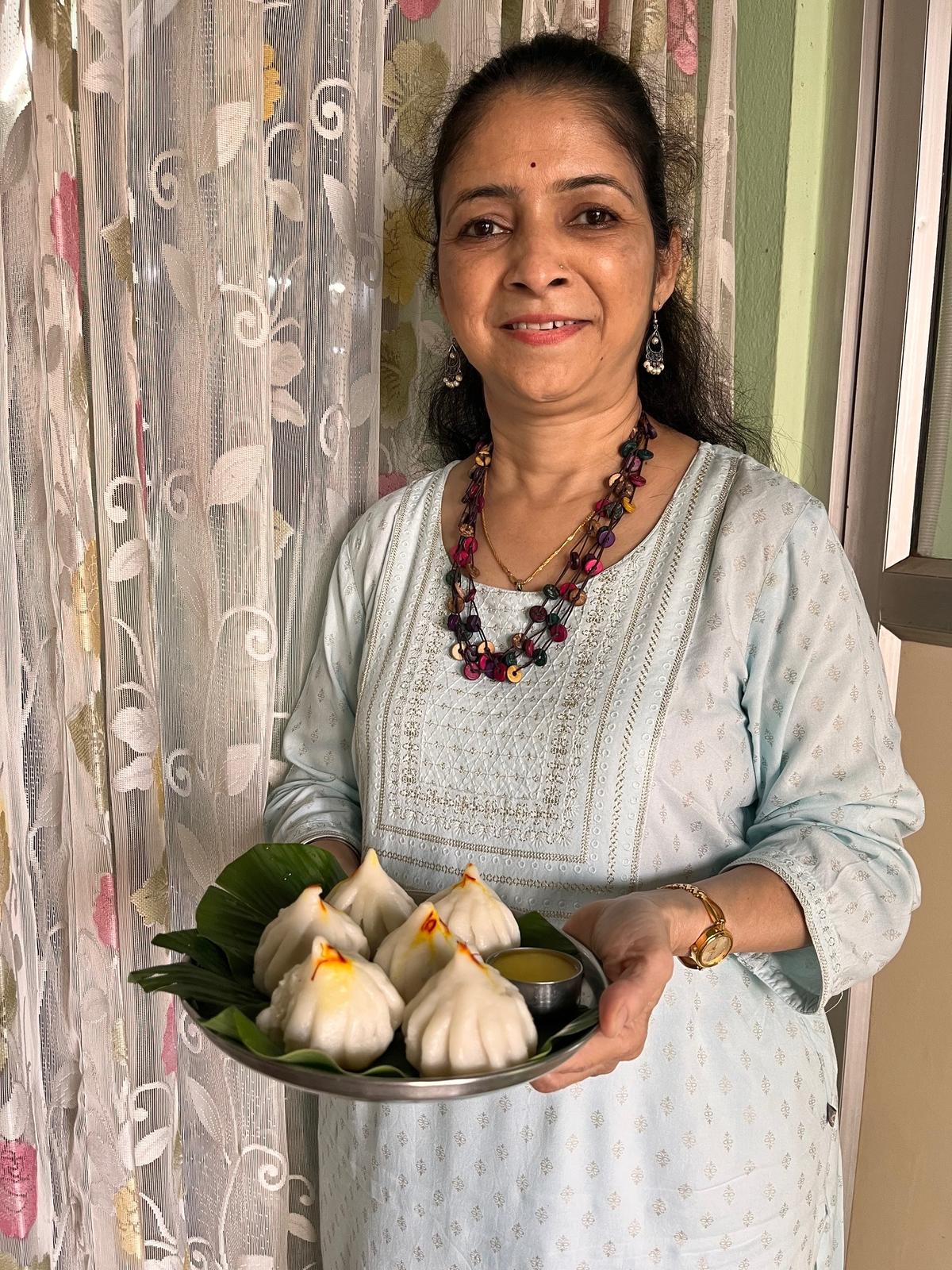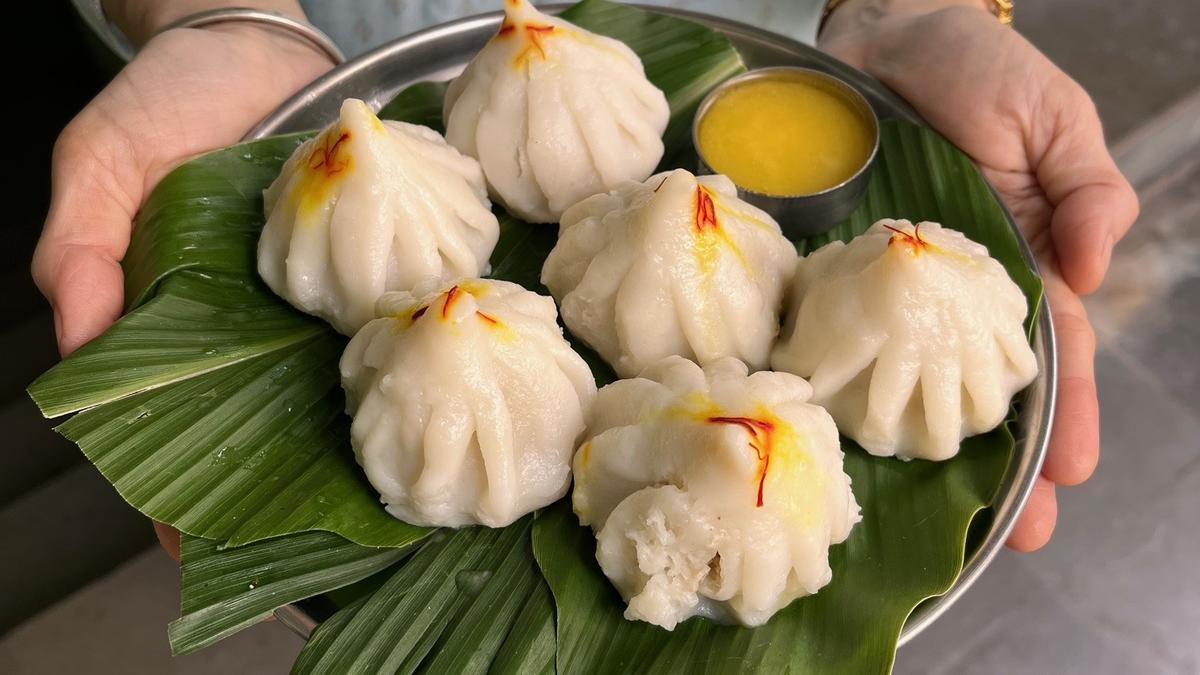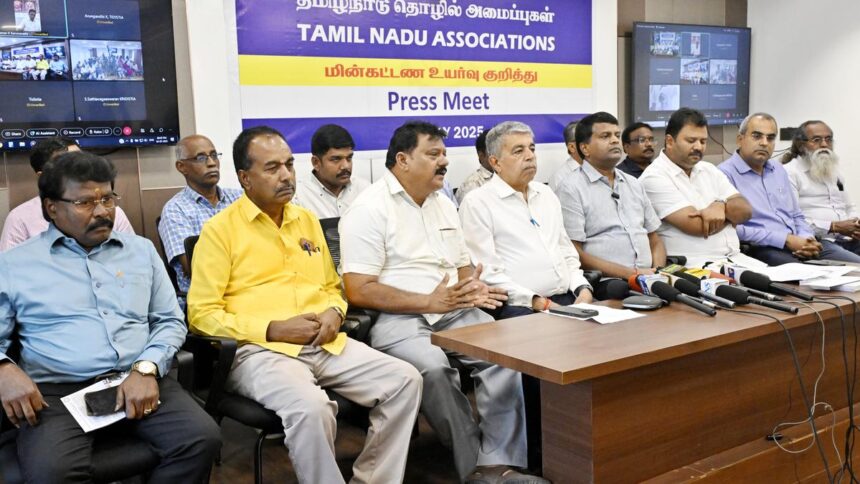
Modak prepared by Swati Mawlankar in Hyderabad
| Photo Credit: Prabalika M Borah
It is that time of year when one sweet takes centre stage — the modak. No Ganesh Chaturthi feels complete without it. In Hyderabad though, the steamed version, the ukadiche modak, isn’t as easy to find on order.
In Sultan Bazar Arun Phansalker has carved a small but loyal space for Maharashtrian food. Back in 2020, during the lockdown, he started what was meant to be a modest venture with one clear aim — to support a family of modak makers from the Konkan district of Ratnagiri. Arun runs a Maharashtrian food catering business in Sultan Bazar.
“My aim was to help the family earn some money during the festival,” Arun recalls. “The family prepares modak in the authentic Maharashtrian method.”
When they first arrived in Hyderabad that year, demand was understandably tentative. Orders trickled in, mostly from the neighbourhood around Sultan Bazar. “We started with 100 and were still happy that people looked forward to purchasing modak,” Arun says.
For the uninitiated, the shell of the ukadiche modak is made from cooked rice flour, soft and pliable in the right hands, but tricky for the unpractised. Into it goes a mix of roasted coconut and jaggery, before the dumpling is carefully shaped into its signature conical form. Unlike the shortcut moulds many home cooks rely on, the Ratnagiri modak makers craft each piece by hand, their skill honed by years of practice. Once shaped, the modaks are steamed till glossy, then served with a drizzle of desi ghee.

Modak for Ganesh Chaturthi
| Photo Credit:
Sanjay Borra
Arun shares that the modak-making team is led by Swati Mawlankar, who stays in Hyderabad for the first couple of days of the festival. While traditional steamed modaks are their focus, the city’s sweet shops take a more commercial route. Counters are stacked with motichoor laddoos, kalakand, and burfi all moulded into the familiar dome shape. Chocolate-filled versions and modak ice creams add to the mix.
Making modak takes a couple hours from preparing the rice flour to making a dough. Arun only sells the modak on pre order from his home where the modak makers are lodged during thier stay in Hyderabad.
“Real modak is always made of rice flour, coconut and jaggery. Sugar cannot be used in the stuffing because it melts when steamed, making the modak collapse. Jaggery, on the other hand, soaks the moisture and holds the filling together,” Swati clarifies. On an average 50 modaks can be made with hand. “Since the numbers are high we use a manual chapati press to spread the cooked rice flour, then we fold the modaks with our fingers to add frills. We use Ambemohar rice flour for our modak.”

Swati Mawlankar
| Photo Credit:
Prabalika M Borah
The early days of Ganesh Chaturthi, she explains, are centred around puja and offerings, with families and friends sharing the delicacy at home. “We also sell unsteamed modaks that can be refrigerated and steamed later. It’s a very simple dish if one knows how to prepare it,” adds Arun.
On average, the team sells about 1,000 boxes during the festival, each box containing four modaks. At ₹40 a piece(not box), the price reflects both the rarity of fresh ukadichemodak in Hyderabad and the labour that goes into every fold.
For enquiries, contact Arun Phansalkar on 9392403345
Published – August 26, 2025 12:26 pm IST





















